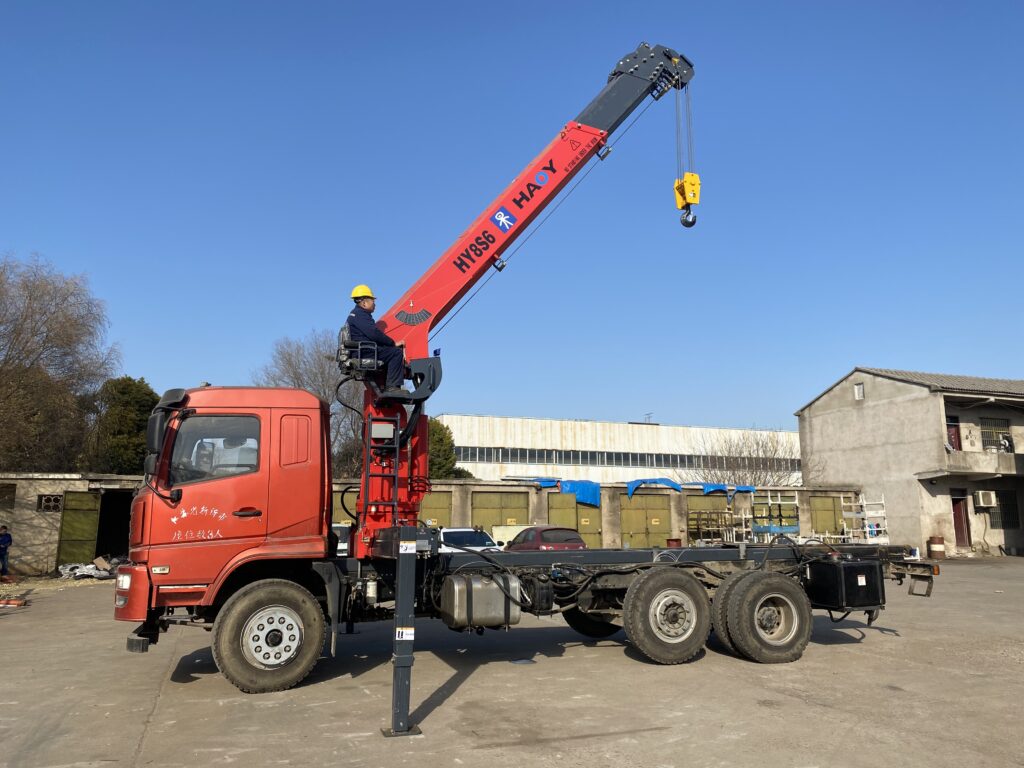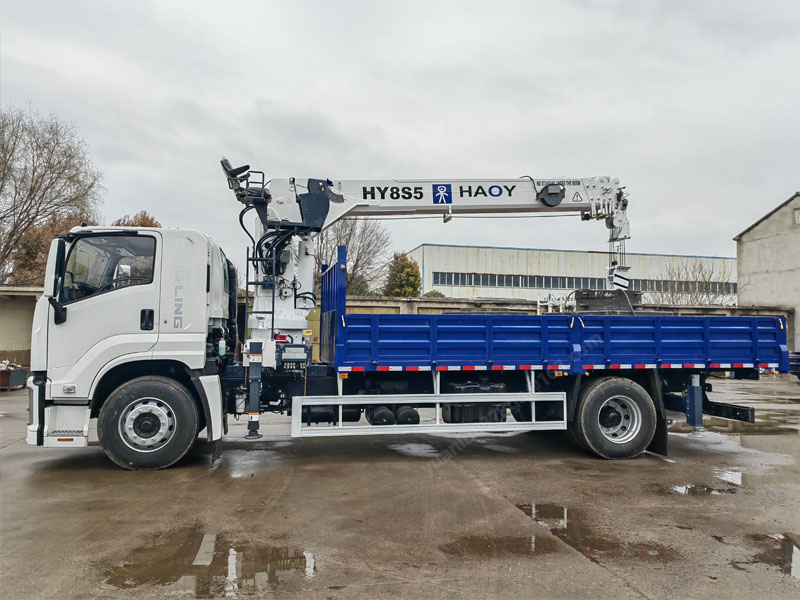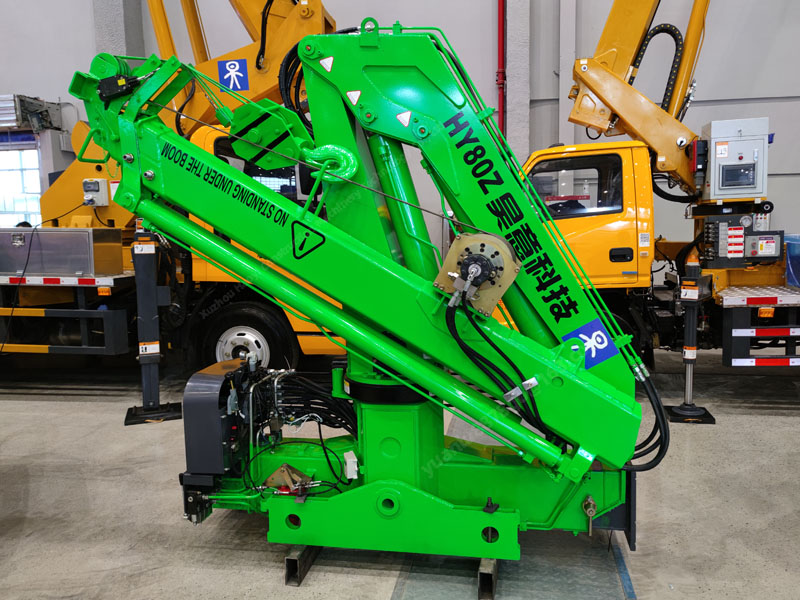Introduction
Picture this: it’s 7 a.m. on a busy job site. The schedule is tight, the street is narrow, and the client is already checking their watch. Out of nowhere, your truck-mounted crane rolls in, lifts a massive precast panel over the rooftops, and sets it perfectly in place — all before the coffee gets cold.
That’s the magic of a truck-mounted crane: it drives like a truck, works like a crane, and adapts to almost any lifting challenge. From swapping out a transformer in a suburban power station to placing HVAC units on top of a mall, it’s the ultimate blend of mobility and muscle.
But when your business needs more lifting power, a big question comes up: should you invest in a brand-new crane, or find a well-maintained used one?
This isn’t just about price tags — it’s about resale value, financing, fuel efficiency, compliance with emission zones, and even keeping your crew happy. In this guide, we break down the pros and cons of both options, share real-world insights, and give you a step-by-step plan so your decision is based on solid facts, not sales hype.
1. Defining the Playing Field
Before we dive into the “new vs used” debate, let’s make sure we’re speaking the same language.
New truck-mounted crane – Straight from the manufacturer or an authorised dealer, with zero operating hours except for factory testing.
Used truck-mounted crane – Any crane that has already had an owner and seen some service. This could mean anything from a lightly used lease return, to a dealer demo unit, to a decade-old workhorse retiring from a long career.
Refurbished crane – A used crane that’s been given a serious overhaul — major parts replaced, structural repairs done, and electronics upgraded, either at the factory or by a certified rebuild centre.
Knowing exactly where a crane falls in this range is the first step to figuring out what it’s really worth — and making sure you’re comparing apples to apples.
2. Weighing the Pros and Cons
Once you know whether you’re looking at a new, used, or refurbished truck-mounted crane, the next step is weighing the advantages and trade-offs of each option.
Full warranty – Peace of mind for major repairs during the early years.
Lower maintenance risk – No hidden wear or unknown service history.
2.1 New Truck-Mounted Crane – Pros:
Latest tech & features – Modern safety systems, fuel efficiency upgrades, and comfort for operators.

2.2 New Truck-Mounted Crane – Cons:
Higher purchase price – Ties up more capital or increases financing costs.
Faster initial depreciation – Value drops the most in the first few years.
2.3 Used Truck-Mounted Crane – Pros:
Lower upfront cost – Easier on the budget and quicker return on investment.
Slower depreciation – Value drop is smaller compared to new units.
2.4 Used Truck-Mounted Crane – Cons:
Maintenance uncertainty – Wear, tear, or hidden faults may show up later.
Shorter warranty or none – Repairs may come directly out of pocket.
Older technology – May miss out on fuel savings or the latest safety features.
Refurbished Crane – Middle Ground: Offers much of the cost benefit of a used unit, but with upgraded components and reliability closer to new. Still depends heavily on the quality of the rebuild and the reputation of the refurbisher.
3. Pricing Benchmarks and Depreciation Curves
Market experts often use a simple model to estimate how crane values decline over time:
In the first year (Year 0–1), the crane’s value typically drops to about 80% of its original invoice price.
From Year 2 to Year 5, the value decreases more gradually, losing around 5–7% per year, settling near 60% by the fifth year.
Between Year 6 and Year 10, depreciation slows further to about 4% annually.
Let’s look at a practical example. Imagine a brand-new 35-ton folding boom crane priced at $400,000. After four years of average use — roughly 1,000 operating hours per year — the market suggests you could sell it privately for about $260,000, assuming it has a full service record and no major structural repairs.
Sometimes, used crane auctions might see prices outside these typical ranges, especially when commodity booms drive demand higher. However, this depreciation pattern generally holds true over longer market cycles.

4. Total Cost of Ownership (TCO) Analysis
A balanced purchase decision weighs much more than the invoice number. Key TCO pillars include:
Capital charge – Depreciation plus financing interest.
Fuel and DEF usage – Newer engines often return better litres per hour figures.
Maintenance and repairs – Service kits, hydraulic oil, wear pads, tyres.
Downtime cost – Lost revenue or rental backfill during repairs.
Resale value – Projected market price at disposal horizon.
Running a seven-year model for our 35 tone example reveals that fuel savings of merely 1.5 litres per hour can tilt overall cost in favour of the newer, more efficient crane—despite its higher purchase price—if annual utilisation exceeds 1,200 hours.
5. Inspection Checklist for Pre-Owned Units
When buying a used truck-mounted crane, carefully inspect the following key areas to avoid hidden issues:
Service log book — Verify dates, part numbers, and technician sign-off to confirm a complete and accurate maintenance history.
Load-moment indicator readouts — Compare recorded overload events against the seller’s claims for consistency.
Boom sections — Check for plating, rewelds, or thickness variations; perform ultrasonic testing on suspicious areas.
Hydraulic cylinders — Look for scored rods, seepage, or chrome wear.
Slewing gear and turret bolts — Assess backlash and torque markings.
Chassis frame — Inspect for rust, twisting, or any holes not from the factory.
If you find any major repairs, consider recalculating the remaining fatigue life or renegotiating the price.

6. Financing, Tax, and Accounting Considerations
Beyond the purchase price, financing and tax incentives play a big role in the total cost of owning a truck-mounted crane:
Accelerated depreciation — Some jurisdictions allow bonus first-year write-offs on new equipment, reducing tax liability upfront.
Section 179 and similar allowances — These incentives increase the net present value of buying new cranes.
Operating leases — Leasing new cranes can keep debt off the balance sheet, whereas used cranes rarely qualify for long-term operating leases from mainstream lessors.
Consult a tax advisor to align these benefits with your company’s cash flow and accounting strategy.
7. Case Profiles
7.1 Regional Builder Chooses New
A mid-sized construction firm secured a five-year contract requiring about 1,500 lifting hours annually, often operating in low-emission urban areas. Despite the higher upfront cost, they chose a new hybrid truck-mounted crane. The savings on fuel and AdBlue were significant, and the projected resale value after seven years was about 45% of the list price. This resulted in the lowest net cost per productive hour compared to any used alternative.
7.2 Utility Contractor Opts for Used
A rural electric cooperative needed an extra crane to handle seasonal storm recovery, with less than 400 hours of use per year. They bought a six-year-old knuckle boom crane with full maintenance records for 55% of its original price. Even after budgeting for a mid-life seal replacement, the payback period was under two years—much faster than buying new.

8. Decision Framework
Utilisation forecast – High-hour workloads favour new, low-hour tasks, tilting to used.
Regulatory horizon – Upcoming emission or safety rules may disqualify older cranes before their mechanical life ends.
Capital liquidity – If cash is tight, the spread between new-unit financing and used-unit cash purchase must be weighed.
Crew preference and morale – Operators often run better cycles with modern controls and ergonomic cabs.
Project image – Prime contractors sometimes rate bidders partly on equipment age and environmental credentials.
Applying these filters typically narrows the field to one or two finalists that meet both job scope and board-room metrics.
Conclusion
There is no one-size-fits-all answer to the new-versus-used question. Instead, savvy buyers match machine age, specifications, and cost structure with their unique usage patterns, regulatory environment, and financial strategies.
New cranes excel in high-duty, compliance-sensitive roles where reliability and resale value are critical. Used cranes perform best in low-utilisation, budget-conscious scenarios where purchase price outweighs technology upgrades.
By running a disciplined total cost of ownership model, conducting thorough inspections, and understanding market depreciation curves, decision-makers can select the option that offers the best long-term value—keeping lifts safe, legal, and profitable.





